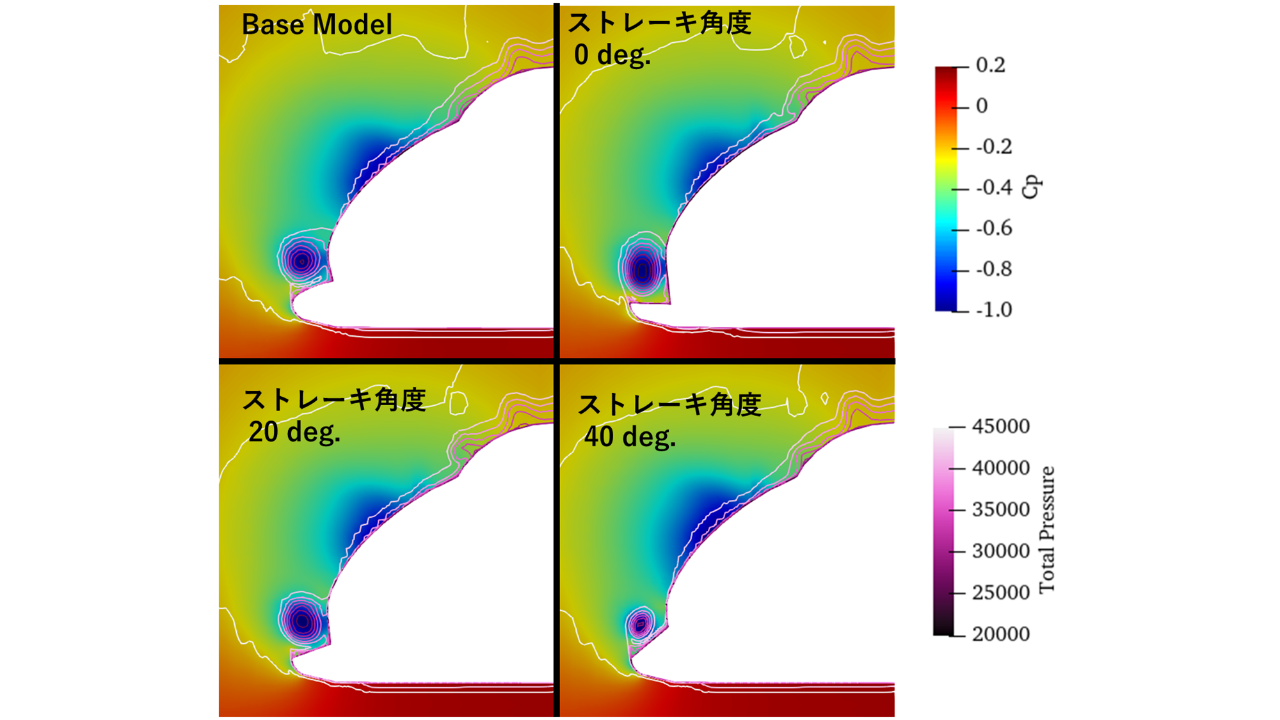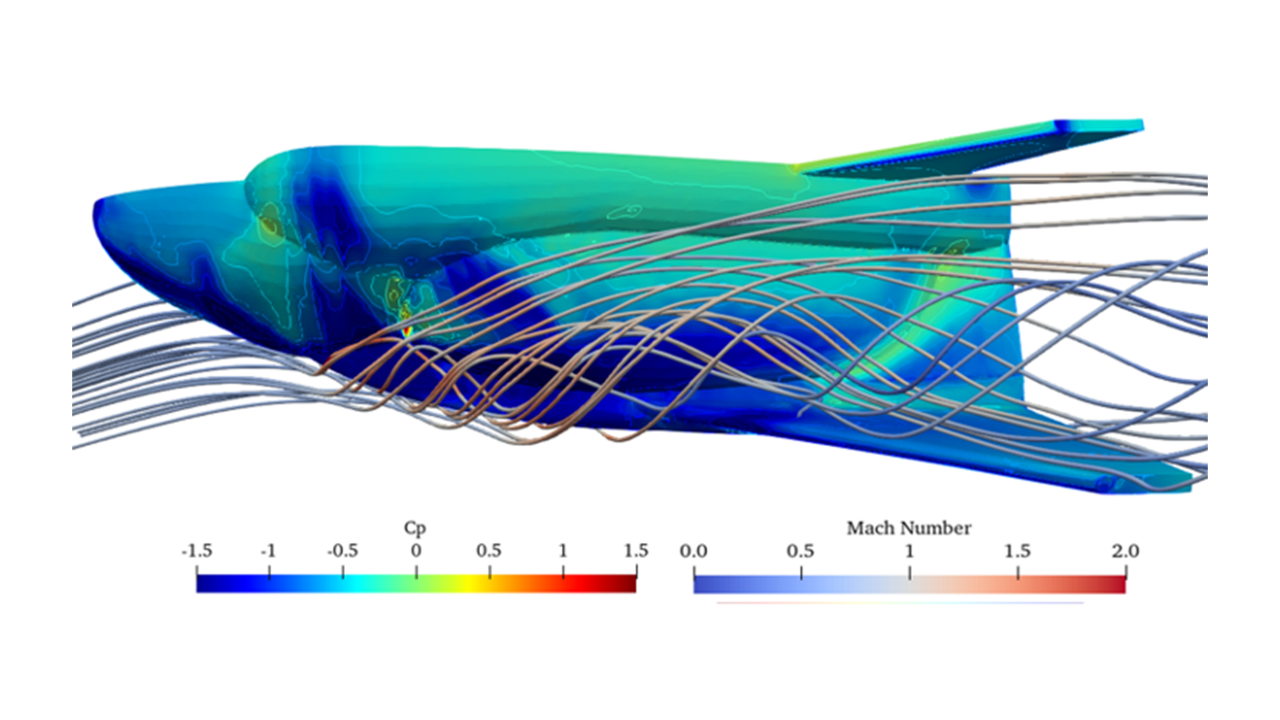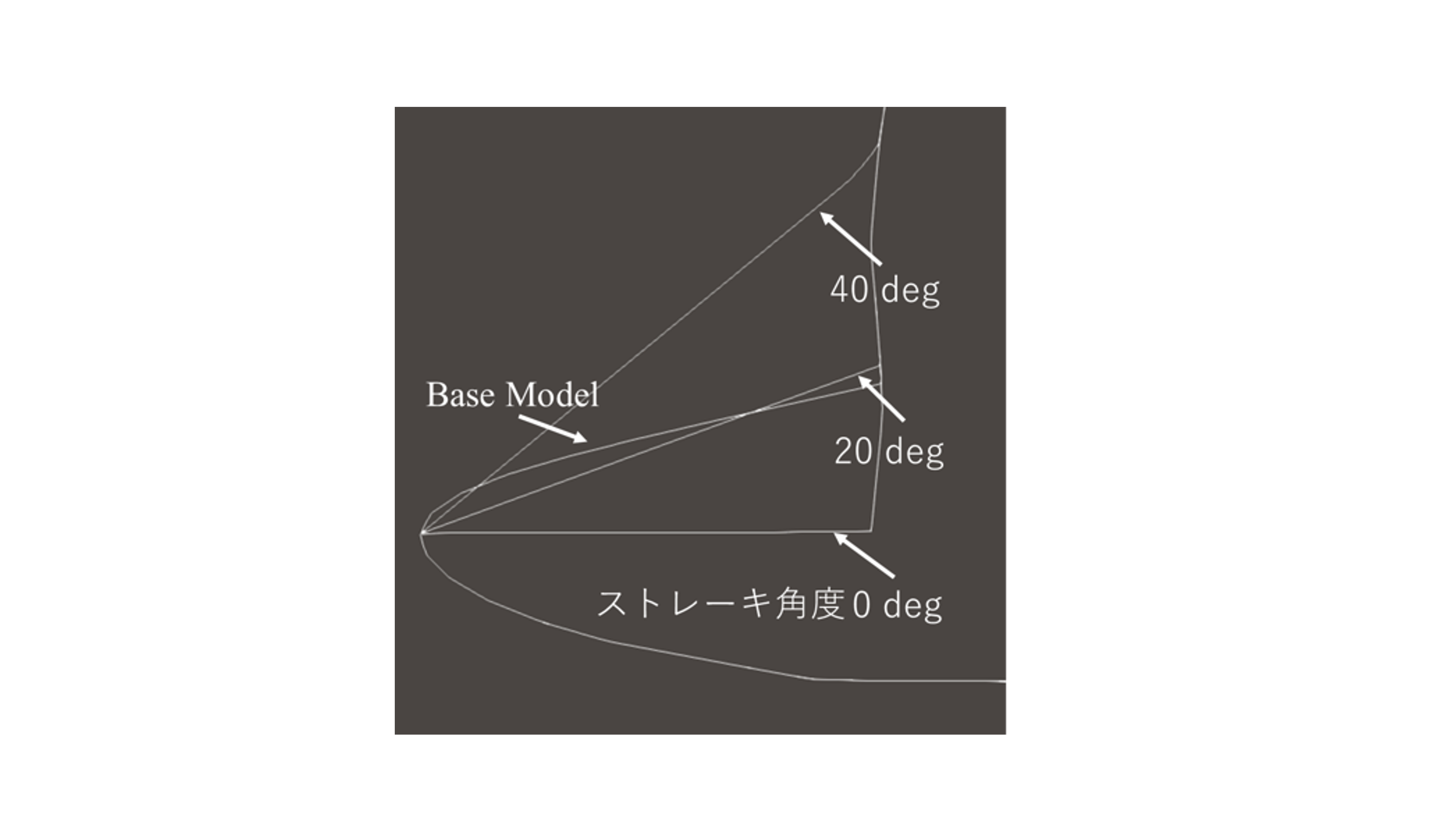Numerical fluid analysis of hypersonic aerodynamic heating during sacecraft re-entry
JAXA Supercomputer System Annual Report February 2024-January 2025
Report Number: R24EACA63
Subject Category: JSS Inter-University Research
- Responsible Representative: Ko Ogasawara, Tokyo Univercity of Science
- Contact Information: Kohei Koyama(7520040@ed.tus.ac.jp)
- Members: Koyo Ando, Kohei Koyama, Ko Ogasawara
Abstract
The aim of this study is to simulate aerodynamic heating around a vehicle flying at hypersonic speeds in the atmosphere and to identify flight conditions and vehicle designs that help reduce heat flux to the surface.
The expected outcome is a reduction in convective heat flux during hypersonic flight for fully reusable spaceplanes and hypersonic air craft. As a result, this would reduce the weight of thermalprotection systems for high-speed vehicles, ultimately improving the feasibility in terms of overall system's weight.
Reference URL
N/A
Reasons and benefits of using JAXA Supercomputer System
Currently, for obtaining analytical values of the aerodynamic performance and thermal protection of upper-stage rockets and lifting bodies, extensive meshes for boundary layer resolution and high-precision calculation methods are computationally feasible using FaSTAR on the JAXA supercomputer.
Achievements of the Year
Before conducting a hypersonic thermal-aerodynamic analysis of a lifting-body reentry vehicle, this study focused on visualizing the flow field around the vehicle and estimating aerodynamic coefficients in the transonic regimes.
A steady-state RANS analysis was performed using JAXA analysis tool, FaSTAR with the SST-2003 turbulence model. Figure 1 presents the surface pressure coefficient distribution and streamlines. These show that the flow around the lifting-body vehicle is dominated by vortices.
Next, as illustrated in Figure 2, the cross-sectional shape of the strake, which generates vortices, was modified. The total pressure distribution at the side of the vehicle, shown in Figure 3, revealed distinct characteristics. It was observed that as the strake angle increased, the size of the vortices decreased.
Going forward, the study will explore not only the strake's cross-sectional shape but also the planform and overall body shape to further enhance vortex lift effectively. Additionally, future analyses will incorporate aerodynamic heating, which poses the most severe conditions for a reentry vehicle.

Fig.3: Pressure distribution and total pressure distribution on cross-stream section at Mach 0.8, angle of attack 15 degrees.
Publications
- Oral Presentations
Kohei Koyama, Koyo Ando and Ko Ogasawara, "Analysis of Flow Separation and Vortex Lift on the Windward Side of a Lifting-Body Re-entry Vehicle in the Transonic Region.", 68th Space Sciences and Technology conference, 2024.
Usage of JSS
Computational Information
- Process Parallelization Methods: MPI
- Thread Parallelization Methods: Automatic Parallelization
- Number of Processes: 100 - 240
- Elapsed Time per Case: 10 Hour(s)
JSS3 Resources Used
Fraction of Usage in Total Resources*1(%): 0.07
Details
Please refer to System Configuration of JSS3 for the system configuration and major specifications of JSS3.
| System Name | CPU Resources Used(Core x Hours) | Fraction of Usage*2(%) |
|---|---|---|
| TOKI-SORA | 630830.25 | 0.03 |
| TOKI-ST | 371784.38 | 0.38 |
| TOKI-GP | 0.00 | 0.00 |
| TOKI-XM | 650.30 | 0.32 |
| TOKI-LM | 0.00 | 0.00 |
| TOKI-TST | 0.00 | 0.00 |
| TOKI-TGP | 0.00 | 0.00 |
| TOKI-TLM | 0.00 | 0.00 |
| File System Name | Storage Assigned(GiB) | Fraction of Usage*2(%) |
|---|---|---|
| /home | 0.00 | 0.00 |
| /data and /data2 | 0.00 | 0.00 |
| /ssd | 0.00 | 0.00 |
| Archiver Name | Storage Used(TiB) | Fraction of Usage*2(%) |
|---|---|---|
| J-SPACE | 0.00 | 0.00 |
*1: Fraction of Usage in Total Resources: Weighted average of three resource types (Computing, File System, and Archiver).
*2: Fraction of Usage:Percentage of usage relative to each resource used in one year.
ISV Software Licenses Used
| ISV Software Licenses Used(Hours) | Fraction of Usage*2(%) | |
|---|---|---|
| ISV Software Licenses(Total) | 0.00 | 0.00 |
*2: Fraction of Usage:Percentage of usage relative to each resource used in one year.
JAXA Supercomputer System Annual Report February 2024-January 2025




